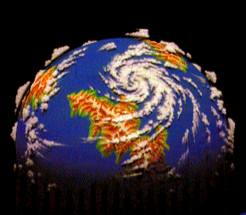Mt. Fluchthorn’s tallest peak, on the Swiss-Austrian border, collapsed in June.
Experts say peaks in the European Alps and Southern Alps of New Zealand are at risk of collapse, too.
The damage and dangers from mountain collapse disproportionately impact indigenous communities.
On June 11, the main peak of Mt. Fluchthorn, on the border of Austria and Switzerland, collapsed without warning.
Roughly 3.5 million cubic feet of earth tumbled down, filling the valley below with 40 Olympic swimming pools’ worth of rocks, mud, and dirt, LiveScience reported. While no people got hurt, a religious cross marking the summit was destroyed.
Fluchthorn had three peaks, and the main, southern one used to be the tallest. With the south peak collapsed, the middle peak is the new summit at 11,145 feet — the second-highest summit in the Silvretta Alps.
Overall, Mt. Fluchthorn is 60 feet shorter than it was earlier this year, per LiveScience.
Why did the peak collapse? Well, like many mountains in the far north, Fluchthorn had a lot of permafrost — a permanent layer of ice and dirt under the mountain’s surface.
“Permafrost is important because frozen water within the ground holds the ground surface together and prevents it from moving. But when that ice melts, the liquid water can flow away. The ground surface becomes less stable and can move, often very quickly,” said Jasper Knight, a geoscientist at the University of Witwatersrand in South Africa.
When a big chunk of mountain moves quickly, like with the mudslide at Fluchthorn, that’s called a mass movement.
“Global warming is causing the permafrost to melt, which is the trigger for these mass movement events to take place,” Knight said.
deleted by creator
Swiss mountain collapse. New Zealand has mountains that might collapse.
And it’s primarily a danger to the indigenous people in South America.
Explained by a scientist from Africa.
Finally some actual world news.
I don’t know about you guys, but this reality is starting to feel more and more like the things that we used to see in movies. The kind of things that were so bizarre that we scoffed at. I don’t like where this is all heading, especially considering it’s happening much faster than initially predicted. It just keeps gaining momentum.
I know we’re not doomed yet, but most people don’t seem to give a hoot. Others see snow and denounce that any of this has anything to do with global warming. It’s a bit depressing sometimes, tbh.
It makes sense to me now, but I never thought that I would see a headline like this.
But the situation isn’t hopeless. Scientists believe if we work now to slow down climate change and prevent mountain degradation, we can still stop the worst outcomes from happening and help protect the planet’s mountains and the communities that live near them.
I hate it so much when articles end like this. 1) It’s something the journalist wants to believe, scientist would not start a sentence with “but I belive…” 2) yea but we don’t do anything like that, what we do is not enough and not fast enough, so no: the situation IS hopeless 😖
But when it is hopeless there is also no more incentive to do anything.
deleted by creator
Style guides often tell journalists to avoid saying what someone “believes”, as you can’t know what’s inside someone else’s mind. We can only know what they say.
Scientists say if we work now to slow down climate change and prevent mountain degradation, we can still stop the worst outcomes…
ApparentlyProbably ChatGPT often ignores what style guides often tell journalists, it’s just a bad article 😒
Mountains collapsing wasn’t on my 2023 bingo card, but somehow it feels appropriate
Welp, that wasn’t on my Apocalypse Bingo card.
Am not a farmer but, doesn’t terrace farming lead to soil erosion and lead to more mudslides? Typically because most trees are removed along the mountain sides which would have larger root networks than crops?
A similar issue is going on in china with promotion of terrace farming and crop loss in recent floods.
Permafrost was holding a mountain together? I mean, I’ll defer to the “geoscientist” but that’s surprising.
deleted by creator
Do you usually call yourself a “geoscientist” or something more specific? I don’t recall hearing that name before.
deleted by creator
Would geologist not cover that?
deleted by creator
Fair enough, thanks for the replies. Not sure why “geoscientist” sounded so foreign to me when I first read it.
How many m^3 are in a fucking Olympic swimming pool?
No deaths but a graven image destroyed, hmm…
Nah I don’t really buy this one, landslides like this are normal. Anyone heard of Frank Slide?
https://en.wikipedia.org/wiki/Frank_Slide?wprov=sfla1
There are tectonic plates colliding beneath mountains and they are unstable lol
If permafrost melts, was it actually permanent to begin with?
The earth is a highly dynamic system but it exists on a time scale that we haven’t evolved to intuit. Coasts, mountain valleys, volcanic regions, fault lines. Not great places to live long term.
Those might actually be the best places to live but has drawbacks to sprawling settlements like modern cities.
River banks and other water bodies supported most civilizations for millennia despite risk of floodings. Valleys would typically be avoided for risks of diseases, water stagnation, etc but those are easier to construct modern buildings.
None of the places on the earth would be immune to the changes that happens in the scale you are mentioning.







